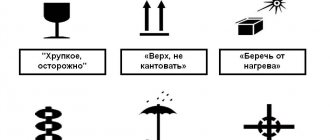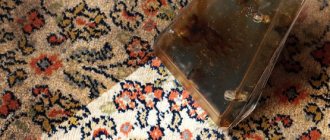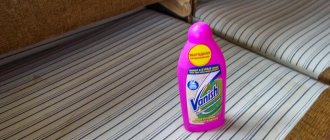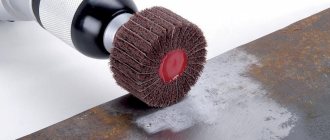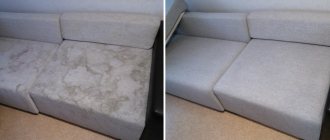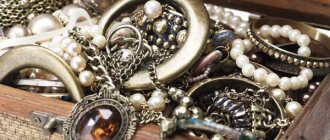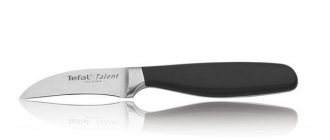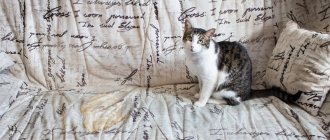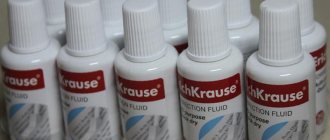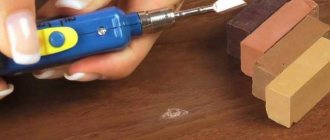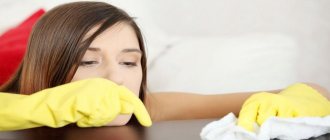Types of pollution
For furniture cleaning to be effective, it is important to correctly identify the type of contamination. Biological and chemical substances are removed in different ways. Having determined what type of stain it is, you can choose an effective cleaning method:
- From paint - such contaminants usually appear during repairs. It is necessary to distinguish between oil and enamel dyes - they are displayed differently.
- Ink blots are inevitable where there are small children, schoolchildren or students. They usually appear because a handle lying on the furniture has leaked.
- Oils - this category includes any greasy marks left after vegetable oils, cosmetics, creams, and dairy products come into contact with the fabric.
- Wine, juices, tea, coffee - stains have clearly defined boundaries with a contour darker than the center.
- Medicines - blots from iodine and brilliant green appear especially often on furniture.
- Food - distinguish between red, protein and fatty stains, from grass and greenery.
- Blood is a protein contaminant that requires care when removing.
- Sticker stains, chewing gum, and tape marks on furniture are especially noticeable on wooden parts.
- From urine, feces - you have to not only remove, but also disinfect the surface.
There is a general recommendation that allows you to remove dirt as efficiently as possible, with the least effort. It can be formulated as the “fresh stain rule”.
The sooner you start removing dirt, the easier it is to remove it. In the first few minutes after a sofa or chair gets dirty, you can get rid of the dirt with a soapy sponge or a damp cloth with soda. And only if this measure does not help, you will have to take on more serious, aggressive chemicals.
Dye
Ink stains
Oil and fat
Wine, tea, coffee, juices
Zelenka, iodine and other medicines
Gum
Primer
It is necessary to prime wooden and veneered surfaces so that the varnish lays more evenly. When sanding, we opened most of the pores and released some of the fibers. If you immediately coat them with varnish, it will be absorbed unevenly, causing the surface to become stained. The primer closes most of the pores, so the varnish will lay more evenly.
Priming veneered furniture can be done in two ways. The first is quick, but accompanied by a strong odor. You need to take nitro varnish or polyurethane varnish, dilute it by 10-20% (depending on the initial thickness), and cover the surface.
A primer is necessary so that the varnish goes on more evenly.
The second method of priming is long, but correct and almost odorless. We take epoxy glue and a soft cloth swab. It’s better to use flannel, preferably white, so that it doesn’t fade or change the color of the furniture. Use this swab to rub the epoxy into the veneer.
While everything is drying, dust will definitely stick to the surface. It needs to be removed. This again can be done in two ways: scraping and grinding. If using a scraper, take a sharp blade (you can use a wallpaper knife) and use it to clean off all the excess. To avoid damaging the veneer, move the blade along the grain. With sanding everything is known: sandpaper with 320 grit and water. The prepared surface is cleaned of dust, washed with water, and dried. After drying, you can apply varnish.
In fact, further polishing of the furniture may not be necessary. Already at this stage the product looks decent.
Basic types of cleaning
There are two types of cleansing: dry and wet (aqua-cleaning). With both methods, you can use folk remedies, industrial foams, shampoos, and stain removers. Any fabric can withstand dry cleaning of furniture. Wet is only suitable for smooth fabrics that do not contain threads that can shrink.
Dry
With this method, special solvents are used instead of water. Foams, liquids, and pastes are produced for domestic use. They do not destroy the structure of the fabric and are gentle on it. It is recommended to select a solvent that matches the nature of the stain. Dry cleaning does not deform the product at all, unlike water cleaning.
Stages of superficial and complete restoration of old furniture with your own hands
A professional solvent is applied to the stain, then dried with a hairdryer or naturally, the dried composition is removed along with the dirt. General contamination is removed using dry foam with a moisture content of no more than 5%. The product is distributed over the entire surface. As it dries, it pulls dirt up, after which it can be removed along with the remaining foam.
Dry cleaning removes stains from materials that cannot be washed:
- genuine leather;
- suede;
- velvet;
- velor
To clean furniture from dust, use a vacuum cleaner with a soft brush. Hard bristles can damage the surface of the material. In an apartment, you can simply throw a slightly damp sheet on the sofa and knock out the furniture with a stick. Dust will settle on the fabric.
Dry cleaning allows you to remove even stubborn, old stains from grease and oils, but it is not effective when the contaminant is water-based.
Wet
Water cleaning is a powerful way to remove dirt, dust, and stains. At home, it is carried out using an extractor - a compact vacuum cleaner with two tanks - for soapy and dirty water. It is more powerful than a regular cleaning device.
If there is no extractor, you will have to work with your hands:
- Vacuum the furniture dry, removing dust.
- Prepare a soap solution.
- Dampen a foam sponge and rub soapy water into the upholstery, rubbing thoroughly.
- Wipe with a sponge soaked in clean water several times to remove the soap.
To prepare a cleaning solution, laundry soap or washing powder is suitable. Old stains can be soaped and left for several hours. During this time, the alkali will remove foreign inclusions from the fibers. Then the soap is removed from the fabric with a wet sponge.
Water cleaning allows you to get rid of blood, traces of fruit, cosmetics, fat, ink, medications, and urine. This is the “heavy artillery” that comes into play when dry cleansing doesn’t help.
The wet cleaning method is not used on pile upholstery, tapestry, fabrics containing linen and cotton.
An intermediate option between the dry and wet method is steam processing. To clean furniture with steam, you will need a steam cleaner. This method provides exceptionally deep processing of upholstery fabrics at home. Cleaning furniture with a steam cleaner is carried out strictly according to the instructions given in the user manual. Heavy stains are removed by double treatment. The steam method is especially recommended for allergy sufferers, as it kills micromites.
Popular fillers for frameless furniture, their pros and cons
Vacuum the upholstery
Prepare a soap solution
Rub the solution into the material, rinse the sponge in clean water, remove the soap
No. 2. Removing blood stains from upholstered furniture
Blood is a very persistent contaminant. It is quite difficult to remove. If possible, you should do this while the stain is still fresh. Dried blood stains are very difficult to remove. If you encounter such contamination, try to get rid of it in several stages:
- If the stain is still fresh , you should put a damp cloth on it, certainly soaked in cold water, so that it absorbs the blood. Let it sit for a few minutes, then dry the area with a dry cloth. Repeat this operation several times.
- If the mark still remains , spray a saline solution on it from a spray bottle (2 teaspoons of salt per 1 glass of water) and blot it with a dry cloth. Repeat these steps 3 to 5 times until the stain disappears.
- For dried stains, it is recommended to use hydrogen peroxide. The cleaning method is the same as with water. Blot and listen until blood comes out of the furniture upholstery.
- You can find recommendations to use ammonia against blood stains. It can really remove a stain, but it will do a lot of damage to the upholstery of the furniture, so we don’t recommend this product.
Traditional methods
Stores did not always offer a wide range of professional solvents and shampoos for furniture. Meanwhile, more than one generation of housewives successfully cleaned upholstery of dirt and stains using soap, soda and other home remedies. Traditional methods even today allow you to quickly remove a newly placed stain before it dries and becomes ingrained.
| Compound | What does it delete? |
| Ammonia, apple cider vinegar and salt in a ratio of 4:4:1 | Food, milk, double-sided tape |
| Medical or food alcohol | Ink, paint, wax, furniture stickers |
| Ammonia | Red wine, greens, grass, hair dye |
| Acetone | Paint, grease, glue |
| Ice | Chewing gum |
| Vinegar + soda | Urine, blood, food, fruits and juices, tea, coffee |
| Dishwashing liquid | Grease, food, stains on stainless steel parts |
| Soapy water | Any fresh organic contaminants, dirt |
Ammonia removes stains from food, wine, grass, hair dye
Alcohol removes ink, paint, wax, and removes sticker marks from furniture.
Acetone will remove stains of grease, paint, glue
Clean furniture from urine, blood, tea, coffee, juices
Ice will help get rid of chewing gum
Dishwashing detergents are effective against food and grease stains
Soapy water removes fresh stains of organic origin, dirt
Removing stains
While the above products can easily deal with dust and minor stains, they are unlikely to be able to remove complex stains. What to do if you find a difficult wax or ink stain on your polish? For such cases, numerous folk remedies have also been invented.
Difficult spots
Complex stains of unknown origin are removed with a mixture of vegetable oil and flour. Simply sprinkle a thin layer of flour onto the stained area and then wipe off with a cotton swab soaked in vegetable oil.
Removing traces of hot dishes
Hot dishes: a kettle, a saucepan or a simple cup of boiling water are very dangerous for polishing; they can melt it and leave unsightly and difficult to remove marks. You can get rid of them by using salt and sunflower oil. To do this, you need to wrap the salt in some light cloth and make a small bag. Rub the damaged area with this bag, and then wipe it with vegetable oil. After this, do not forget to wipe the surface dry.
Wax drops
Candle wax is also a very dangerous enemy of polish. However, it can be easily removed with a knife and gasoline. The wax is very easy to remove if you heat it up; to do this, you need to heat the knife a little and pry the wax off with it. After removing the main wax mass, a speck will remain, which can be easily washed off with gasoline.
Ink stains
Beer and wax work very well on such stains. In this case, the beer cannot be boiled, since it is the small amount of alcohol contained in it that will remove the ink. Leave the beer on the stain for a while, but do not get carried away - the alcohol can damage the surface. After the stain has been removed, the surface must be wiped with wax.
Heavy soiling
Heated vinegar can deal with particularly heavy stains on the polish. It's best to take 9%. Warm the vinegar a little and soak a cotton swab in it. Rub the dirty surface; the intensity and duration of cleaning depends on how deep the stain is. After cleaning, the surface can be treated with regular wax to restore shine.
Universal professional products
Universal household cleaners do an excellent job of removing stains of various origins. “Chemistry” removes both ordinary contaminants and those that can only be treated aggressively. With its help, it is much easier to remove stubborn stains and old dirt. In terms of effectiveness, shampoos, foams and powders for cleaning upholstered furniture at home are second only to professional dry cleaning products.
Any cleaning product should be tested on an inconspicuous area of the upholstery before use.
The shampoos are very easy to use. They can be applied and washed off with a foam sponge or using a washing vacuum cleaner. The furniture must first be vacuumed to remove dust and crumbs. Shampoo helps get rid of fresh and old stains or clean the entire surface.
Application procedure:
- Mix a cap of the product with water in the dosage specified in the instructions.
- Beat until foam forms.
- Apply with a sponge to the upholstery.
- Wait until the mixture dries and absorbs dirt.
- Remove excess with a vacuum cleaner.
Foam differs from shampoo in having less water content. It is suitable for dry cleaning of fabrics with pile that are not washable. The foam cleaner is available in aerosol cans. The composition is applied to the contaminated area, wait a few minutes for it to be absorbed, then lightly rub it into the fabric with a brush and allow to dry.
Powders are another group of cleaners. They are diluted with water in the ratio indicated on the package, or applied dry and rubbed until the dirt is absorbed into the grains. In addition to powder, you can clean furniture from stains using a special pencil with a surfactant.
Design features of furniture gas lifts, nuances of selection and installation
Shampoo
Powder
Foam
Pencil
Pre-grinding
Polishing furniture is a long process and it begins with sanding. First, all cracks and other defects are covered with wood putty of a suitable color. After it has completely dried (the period is indicated on the label), sanding begins.
A sander is best for polishing wood or veneer. Tape or disk is a matter of taste and preference; it also depends on the complexity of the furniture shape. You will also need a set of sandpaper from coarse (80) to very fine (1200) grit.
In extreme cases, an angle grinder with a special attachment (disc and Velcro) may be suitable. But when working with it, it is difficult to achieve a really good result - there is no required mobility of the sanding platform, so the result of such wood polishing will not be above average.
What you might need to varnish furniture
We start sanding with 80 grit. We use it carefully, removing only large irregularities. Then we repeat the treatment with sandpaper at 120, then at 180 and 240. During the work, we must periodically remove dust and inspect the surface to identify unevenness and other defects. sometimes they are better identified by touch.
Then take water and 320 grit sandpaper. Wet the surface to be sanded and the sandpaper. We sand everything again, but this time with water. At this stage, you should get a good result - everything should be smooth. If everything is satisfactory, we move on; if not, we polish it for some more time.
How to get rid of unpleasant odor
Over time, furniture begins to emit an unpleasant odor. New products can also smell. The problem is eliminated using table or apple cider vinegar. A tablespoon of the substance is diluted in a glass of water, moistened with a sponge and wiped over surfaces, joints and corners. The treatment is repeated after a week. Vinegar destroys harmful microflora.
Lacquered furniture with dark upholstery can be treated with a very weak solution of potassium permanganate. Lightly moisten the sponge and gently, without pressure, wipe the fabric and body with it. Potassium permanganate is a powerful antiseptic; it will help if the cause of the unpleasant odor is microorganisms.
Regular and laundry soap also do a good job of removing extraneous odors. With their help you can eliminate the smell of beer, tobacco, and dust. Before use, the soap must be grated on a fine grater. Preparation:
- Stir some soap shavings into the water.
- Add a tablespoon of citric acid and vinegar per liter of solution.
- Beat until fluffy foam.
- Apply to the surface of the sofa.
- Let dry.
- Remove residues with a stiff brush.
Shampoos intended for upholstered furniture are used in the same way. Regular salt works well with tobacco and mustiness. You need to sprinkle it on the surface, leave it for a day, and then vacuum the furniture. Salt is the most famous household odor eliminator.
Removes unpleasant odors and harmful microflora
Suitable for dark lacquered furniture
Removes the smell of beer, tobacco, dust
Table salt will get rid of the smell of tobacco and mustiness
Household cleaning
We suggest using the following recipes:
- Soda, powder and vinegar. Suitable for light-colored furniture. Mix 1 tbsp. a spoonful of soda and washing powder. Pour vinegar (1/3 cup) into the product. Add 500 ml hot water. Place the solution in a spray bottle and treat the dirt. Clean the upholstery with a soft sponge.
Stage 1: take table vinegar ~70 ml
Stage 2: Dial 500 ml of water
Stage 3 add a teaspoon of soda
Stage 4 container for preparing the product
Stage 5 Applying cleaning agent
Stage 6: Wipe the surface dry with microfiber
- Hydrogen peroxide. For 1 liter of warm water, take 15 - 20 drops of hydrogen peroxide. Stir (you can add a little liquid soap). Treat the upholstery and wipe it with a soft sponge.
- Lemon juice. Like vinegar, the juice of this citrus fruit has oxidizing properties. Dilute 120 ml of juice in 500 ml of water. Treat contaminants. In addition to the main effect - clean upholstery, the juice will give the furniture a pleasant citrus smell.
Useful tips
There are general recommendations for cleaning furniture fabrics. One of the most important is that before you start removing a stain or blot, you need to look at the product data sheet. It usually indicates what actions are allowed and what is prohibited. It is better to combat pollution in daylight. To prevent streaks from appearing, stains should be treated from the edges to the middle and not rubbed with force in all directions.
Recommendations for caring for different types of fabrics:
- Pile (flock, velor, velvet) - washing is prohibited, use only dry cleaning. Stains can be removed with a soap solution followed by blotting dry. Flock upholstery at home should never be wetted with bleach or alcohol solvent.
- Leather - artificial and natural - is cleaned with a specially impregnated napkin. Stains are removed with a neutral detergent, an aqueous or alcohol solution, or soapy water. For nubuck, a regular stationery eraser will do.
Professional cleaning of furniture at home using stain removers and special detergents will restore the attractiveness of the interior. The stores offer a large selection of cleaning products; you just need to use them correctly.
For pile fabrics, dry clean only
The skin is cleaned with specially impregnated wipes
You can remove stains from nubuck with a regular eraser.
What you need for polishing
Now we are not talking about professional products from the store, designed specifically for the care of polished cabinets and tables. What available tools can be used for the same purposes?
- From the kitchen cabinet: vegetable oil, wine vinegar, brewed tea, salt, flour, milk, potatoes, beer, sauerkraut (brine).
- From the home first aid kit: burdock oil, talc or baby powder, ethyl alcohol.
- From the bathroom: shampoo, liquid soap, antistatic spray.
- From the pantry: turpentine, gasoline, shoe polish.
Of course, you can’t do without special equipment. First of all, you will need pieces of soft flannel and cotton fabric, a small piece of leather or suede, and cotton sponges. As well as a bowl and pan, measuring cup and knife. Since some of the products used are quite aggressive, and you simply have to work with your hands, protective rubber gloves will also come in handy.
